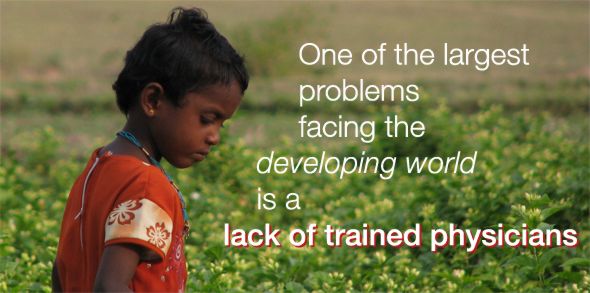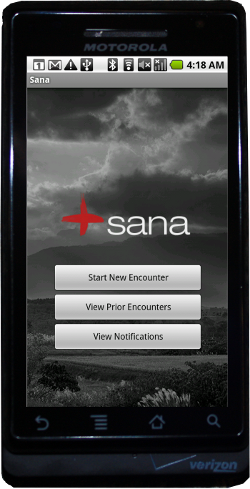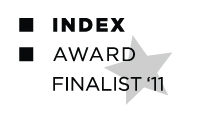Diagnostics Made Simple
Mission
Our mission is to revolutionize healthcare delivery in remote areas through innovative mobile information services that improve patient access to medical specialists for faster, high quality, and more cost effective diagnosis and intervention.
Based on the work and contributions of students, volunteers, partner organizations, and sponsors, Sana offers an open source data collection and collaboration platforms for clinical research and best practice health care delivery for underserved rural populations.
The Problem
One of the largest problems facing the developing world is a lack of trained physicians. While there is not a shortage of untrained or semi-trained workforce, many health workers in many developing nations are not able to dispense adequate care due to a lack of expertise.

Issues in delivering affordable and effective health care in developing countries include: lack of skilled or semi-skilled health care workers for accurate screening and referral; lack of a permanent and portable record of a patient's medical history; lack of medical diagnostic devices; poor supply chains for replacing medical equipment; poor treatment compliance; slow rates of information flow; and lack of quality auditing to identify bottlenecks and quantify health care improvements.
NGOs and social entrepreneurs are starting to build their own models to solve different types of medical challenges all over the developing world using the power of mobile solutions. Our system provides an instant infrastructure to capture media and patient information using whatever method is appropriate to the locale, and send it to a centralized server with sophisticated workflow management and diagnosis software. The system is turnkey, allowing for easy integration with existing systems. In addition, it is completely customizable for any organization.
Our Solution

Sana, is a student organization based at the Massachusetts Institute of Technology that offers an end-to-end system that seamlessly connects health workers to medical professionals. In addition, the group assists its partner organization with implementation through collaborative innovation. The team consists of volunteers with diverse background – medicine, computer science, clinical informatics, health policy, social sciences, and business and operations management. It strongly believes that there is a need to bring together experts from various disciplines in order to design an operating system around the delivery of care that is facilitated by mobile technology. The technology is crucial, but not the sole component of the solution. It is the centerpiece of a learning system that is designed not only to improve clinical outcomes, but the health delivery process itself.
Why Sana?
Sana recognizes that using mobile technologies for telehealth in developing nations requires dealing with many standards, different networks and local challenges ranging from intermittent connectivity and cultural differences. Our system provides an instant end-to-end infrastructure for media-centric remote decision support by experts . Packetization, a synchronization model, and multi-modal data transport allow Sana to operate even in poor cellular coverage areas. While the system is mobile-centric, it is designed to provide alternatives such as WiFi and tethered uploads for bandwidth-constrained situations.

Sana also realizes that few instantiations of remote medical diagnostics are the same. Unlike hodge-podge solutions, Sana is highly customizable, allowing organizations to design their own applications. These applications can be dynamically loaded onto phones running Sana, and they can be shared between other organizations.
We understand that user interface is extremely important, that's why the Sana interface has been laboriously engineered for ease-of-use and clarity. By leveraging Google Android's API, Sana offers a highly usable and inviting interface.
Another reason to use Sana is because of its commitment to Open Source. The Sana platform is released under the BSD license, allowing people to extend, improve, and tweak the system as they choose. We feel that the best way to innovate is through open innovation, allowing organizations, universities, and companies to contribute to Sana.
Sana Workflow
Using the Sana app, health workers can run a procedure and collect patient data. Sana then uploads the information to OpenMRS for a doctor to review. After reviewing the case, doctors can notify the health worker of the diagnosis by sending results to the Sana app. Watch our demo below of Sana being used in Mexico.
Sana Demo in Mexico City from Nicole Prowell on Vimeo.

